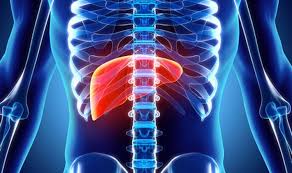
Breaking News
 Dead Men Tell No Tales: How Israel Eliminates Witnesses
Dead Men Tell No Tales: How Israel Eliminates Witnesses
 This Is Why Nice Neighborhoods Have No Blacks In It.
This Is Why Nice Neighborhoods Have No Blacks In It.
 Canada Locks Down the Woods. Fines Range from $25K – $150K for Hiking, Biking & Fishing
Canada Locks Down the Woods. Fines Range from $25K – $150K for Hiking, Biking & Fishing
 Trump Puts Washington DC Under Federal Control, Calls in 800 National Guard Troops
Trump Puts Washington DC Under Federal Control, Calls in 800 National Guard Troops
Top Tech News
 3D printing set to slash nuclear plant build times & costs
3D printing set to slash nuclear plant build times & costs
 You can design the wheels for NASA's next moon vehicle with the 'Rock and Roll Challenge
You can design the wheels for NASA's next moon vehicle with the 'Rock and Roll Challenge
 'Robot skin' beats human reflexes, transforms grip with fabric-powered touch
'Robot skin' beats human reflexes, transforms grip with fabric-powered touch
 World's first nuclear fusion plant being built in US to power Microsoft data centers
World's first nuclear fusion plant being built in US to power Microsoft data centers
 The mitochondria are more than just the "powerhouse of the cell" – they initiate immune...
The mitochondria are more than just the "powerhouse of the cell" – they initiate immune...
 Historic Aviation Engine Advance to Unlock Hypersonic Mach 10 Planes
Historic Aviation Engine Advance to Unlock Hypersonic Mach 10 Planes
 OpenAI CEO Sam Altman Pitches Eyeball-Scanning World ID to Bankers
OpenAI CEO Sam Altman Pitches Eyeball-Scanning World ID to Bankers
 New 3D-printed titanium alloy is stronger and cheaper than ever before
New 3D-printed titanium alloy is stronger and cheaper than ever before
 What is Unitree's new $6,000 humanoid robot good for?
What is Unitree's new $6,000 humanoid robot good for?
 "No CGI, No AI, Pure Engineering": Watch Raw Footage Of 'Star Wars'-Style Speeder
"No CGI, No AI, Pure Engineering": Watch Raw Footage Of 'Star Wars'-Style Speeder
Discovery of liver cell with stem cell-like properties could eliminate need for organ transplants

From hepatitis to cirrhosis there are over 100 different individual conditions that result in damage to the liver. Collectively, liver diseases have been dramatically rising in the United States over the past decade. Damage to liver cells is generally permanent, and if severe enough the only effective treatment is a complete liver transplant.
New research suggests an entirely new treatment for liver disease in the future could eliminate the need for liver transplants by essentially regenerating diseased or damaged liver cells. Utilizing a method called single-cell RNA sequencing the researchers closely studied human fetal and adult livers and discovered a specific type of cell, called a hepatobiliary hybrid progenitor cell (HHyP).
In utero, when a fetus is developing, HHyP cells act as precursors to the two main types of mature liver cells, hepatocytes and cholangiocytes.



